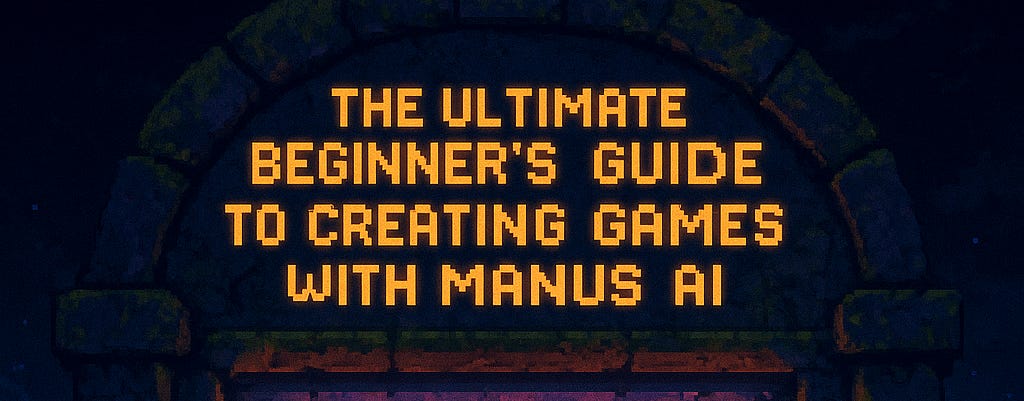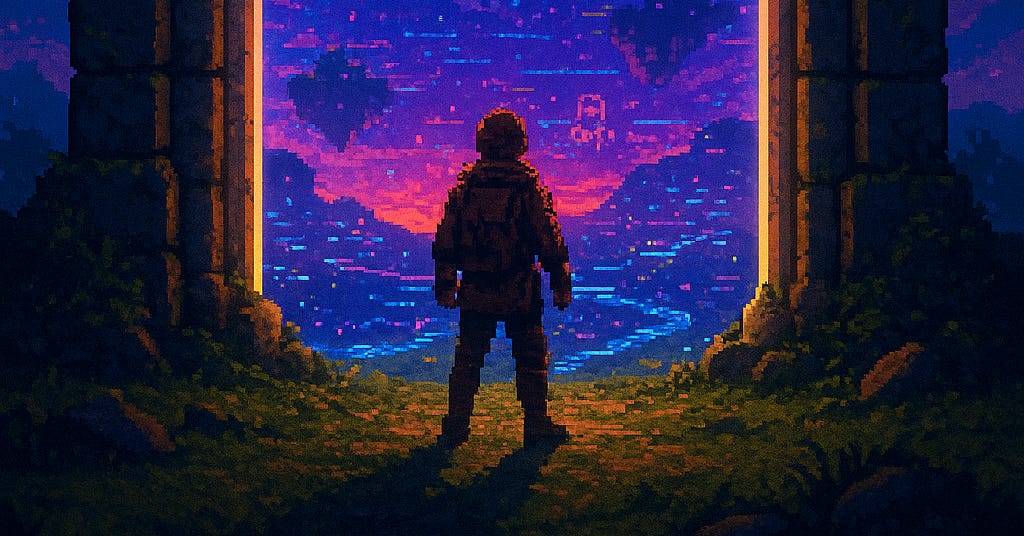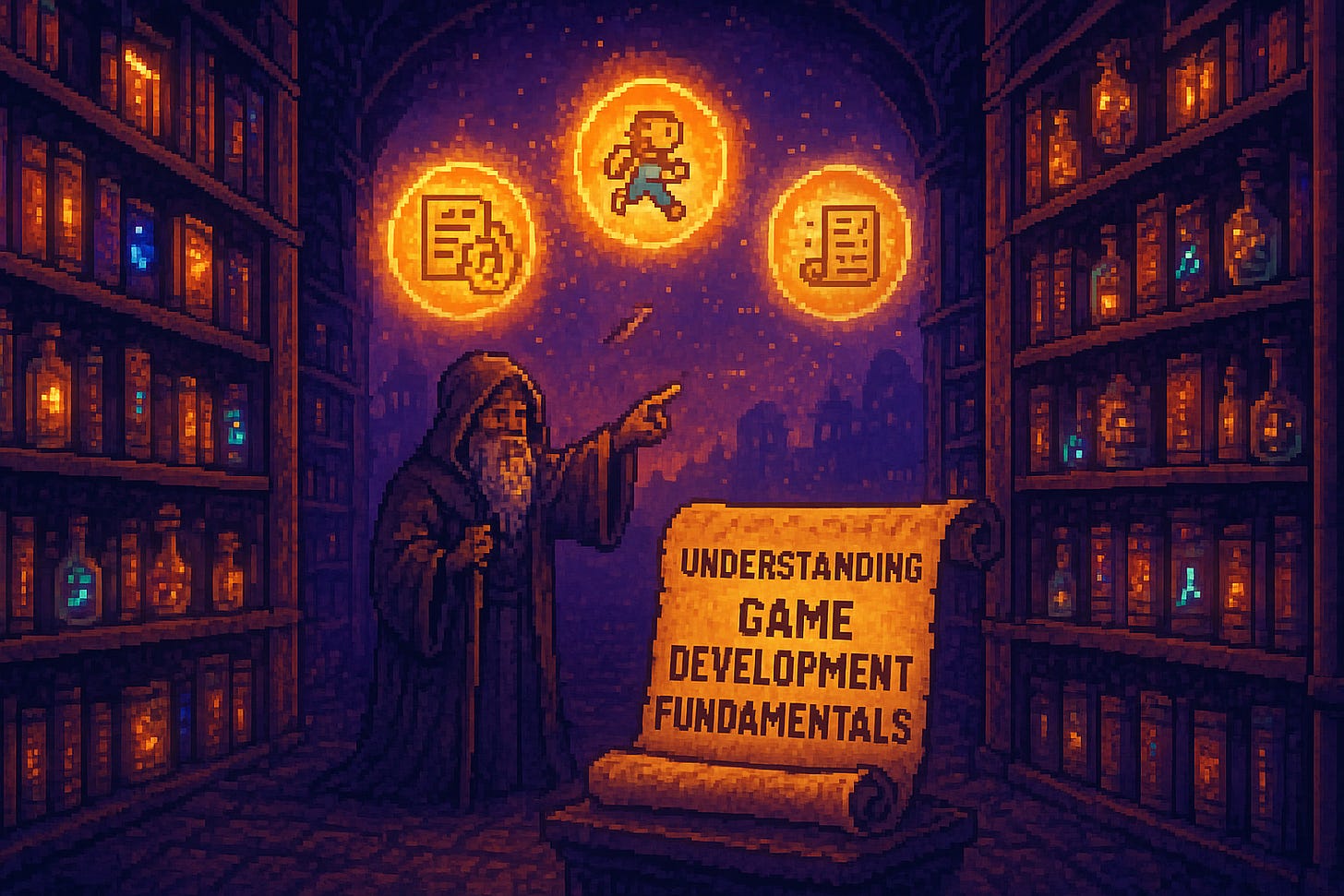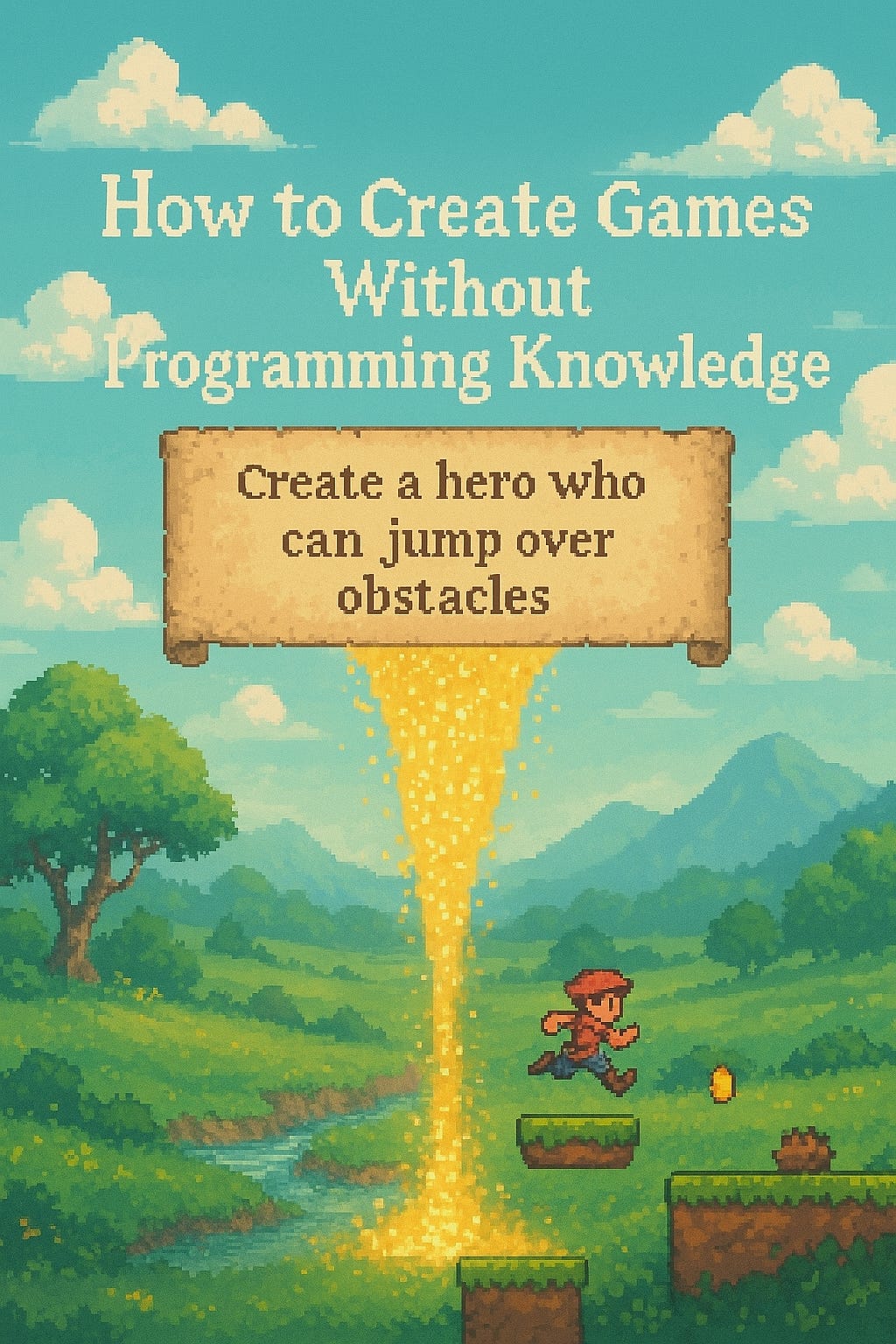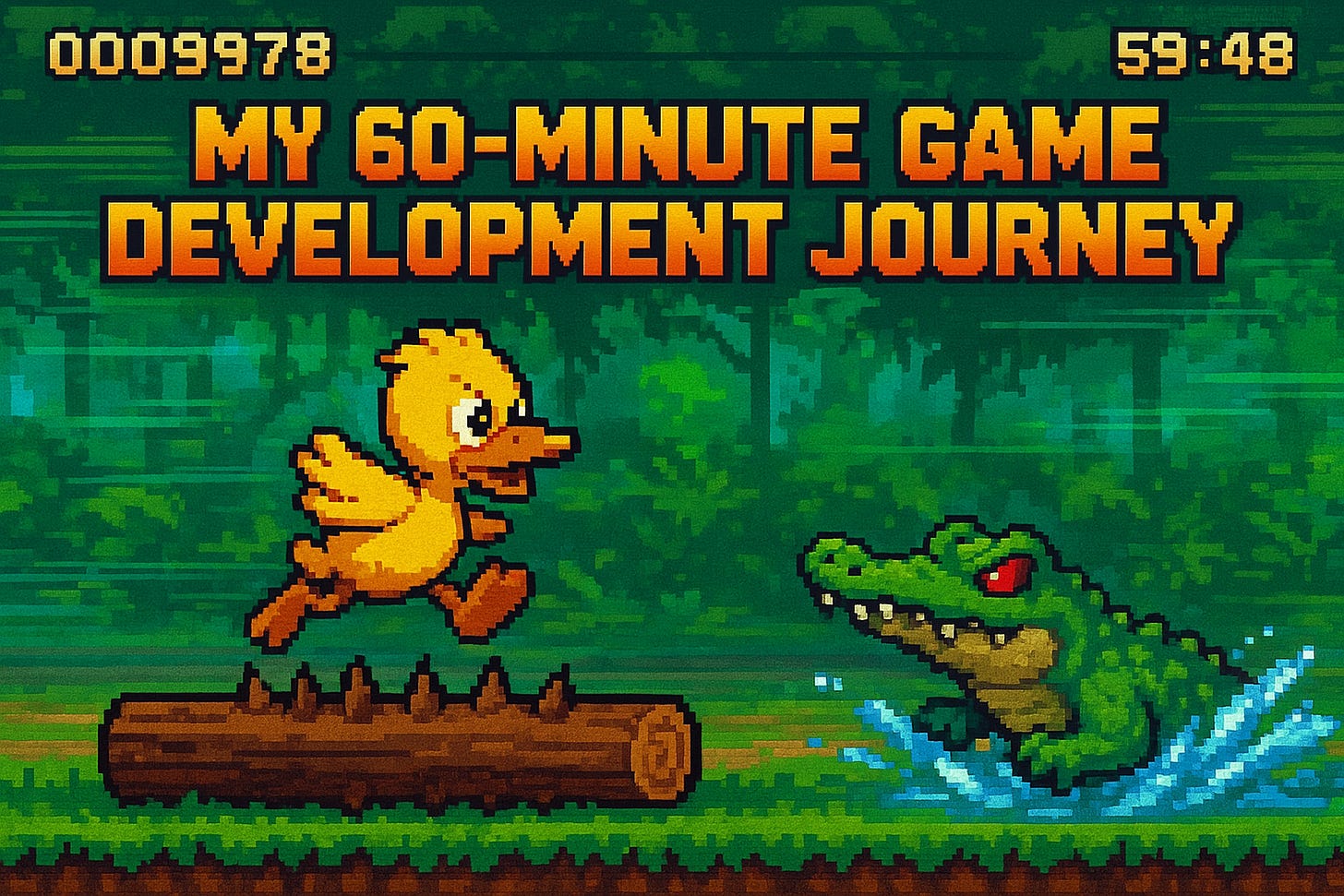Your First Game with Manus 🎮
Tutorial. Prompts. Challenge Accepted?
Hey
Game Dev has always had barriers to entering the market. Now, Vibe Coding Tools are changing that by converting our thoughts into fully functional games, no coding needed. So in this post, we discover how to use Manus (Free-to-use powerful AI agent) for Game Development, so basically everyone can develop their own game!
This post is prepared with Guest Author - Souradip. Thanks, Souradip!
If you also want to write for Creators AI - send us email here
This comprehensive guide will take you on a personal journey, starting with my own excitement about discovering Manus AI and culminating in you building your very first game in under an hour. We'll not only explore the fundamentals of game development and dive deep into practical prompts and techniques, but I'll also share the stories of how I and others have pushed the boundaries of what's possible with AI-powered game creation.
What is Manus AI?
We picked Manus for this project because it’s one of the few agents that feels powerful and authentic at the same time. While many tools shine in quick “vibe coding” hacks, Manus stands out when you throw something complex at it - research + creativity, lots of context, and no room for freezing or endless clarifications. Its big context window and ability to run long operations without breaking flow made it perfect for testing wipe-coding in a real scenario. In short: Manus deserves a shot.
What you need to know:
Manus AI has a layered architecture. When you submit a game idea, the system deploys three specialized agents:
Planner Agent: Acts as your game designer, breaking down your concept into actionable development tasks
Execution Agent: Functions as your programmer and artist, implementing the planned features using various tools and external systems
Verification Agent: Serves as your quality assurance tester, monitoring results and triggering corrections when needed.
This collaborative approach means you're not just getting AI assistance - you're getting a full-stack project development.
Understanding Game Development Fundamentals
Before diving into work with Manus AI, it's essential to grasp what game development actually involves. This foundation will help you communicate more effectively with the AI and understand the impressive scope of what it's accomplishing behind the scenes.
The Core Components of Any Game
Game development is fundamentally about creating interactive experiences. Every game, regardless of complexity, consists of several key elements:
Game Design and Mechanics form the backbone of any gaming experience. This includes the rules that govern how players interact with your game world, the objectives they're trying to achieve, and the systems that make gameplay engaging. Think of mechanics as the "verbs" of your game - jumping, shooting, collecting, solving puzzles.
Visual and Audio Assets bring your game world to life. This encompasses everything from character sprites and background environments to sound effects and musical scores. Traditionally, creating these assets required specialized artistic skills and expensive software.
Programming and Logic handle the technical implementation. This includes the game loop (the core cycle that updates and renders your game), input handling, collision detection, and all the behind-the-scenes code that makes your game functional.
The Traditional Development Challenge
Historically, game development required mastery of multiple disciplines. A solo developer needed to be part artist, part programmer, part designer, and part tester. Even simple games like Pong or Tetris involve complex technical implementation.
Consider the creation of a basic endless runner game through traditional methods:
Art Creation: Designing character sprites, background elements, obstacle graphics, and UI components
Programming: Writing movement code, collision detection, scoring systems, and game state management
Audio Integration: Creating or sourcing sound effects and background music
Testing and Polish: Debugging code, balancing difficulty, and ensuring smooth gameplay
This process typically requires weeks or months of dedicated work, extensive learning, and often collaboration between multiple specialists.
The No-Code & Revolution
AI and no-code platforms are revolutionizing game development, letting anyone build complex, playable games by simply describing ideas—no programming required. Real examples include Rosebud AI’s prompt-based game creation suite, Bitmagic’s 3D game builder with natural language input, and GDevelop’s open-source, AI-assisted engine for easy 2D and 3D games.
Indie titles such as "The Last Free Man," "Castle Destroyer," and "Happy Llama" are built almost entirely using Rosebud’s AI-powered game creation tools. The code, assets, and much of the gameplay logic, including enemy AI, are generated and modular, allowing rapid prototyping for creators and students. These games have solid user engagement and player communities.
I love the case of our beloved solopreneur Pieter Levels. He built a flight simulator mainly with Cursor, the game went viral and turned out to be a $75k MRR business.
Link to check it yourself - Fly Pieter
How to Create Games Without Programming Knowledge in Manus AI
The beauty of vibe coding is in the ability to transform natural language descriptions into fully functional games. This section will walk you through the exact process of creating games without writing a single line of code.
The Prompt-to-Game Pipeline
We will operate Manus entirely through conversational prompts. Simply describing what we want, and watching/calibrating results.
Here's how it works:
Step 1: Conceptualization Through Natural Language
Instead of creating design documents or technical specifications, you communicate your game idea in plain English. For example, rather than programming jump mechanics and collision detection, you might simply say: "Create a side-scrolling game where a character runs automatically and can jump over obstacles."
Step 2: AI-Driven Asset Generation
Manus AI automatically creates all necessary game assets. This includes:
Character sprites and animations based on your descriptions
Environmental backgrounds that match your game's theme
Sound effects and audio appropriate for the gameplay
User interface elements for menus, scores, and controls
Step 3: Automated Code Implementation
While you're describing gameplay mechanics in everyday language, Manus AI is simultaneously:
Writing the underlying game code
Implementing physics systems
Creating input handling systems
Building game state management
Establishing scoring and progression mechanics
Step 4: Integrated Testing and Refinement
The AI continuously tests your game as it builds it. If something isn't working correctly, it automatically debugs and refines the implementation without requiring your technical intervention.
Real-World Application: From Idea to Playable Game
Let's examine how this process works with a concrete example. Imagine you want to create an endless runner featuring a duck escaping from a crocodile:
Traditional Approach Would Require:
Learning a game engine like Unity or Godot
Programming character movement and animation systems
Creating or purchasing art assets
Implementing collision detection and game physics
Designing and programming enemy AI behavior
Building user interface and scoring systems
Testing, debugging, and polishing
Wrapping this up:
You simply describe your vision: "Create an endless runner where a cartoon duck runs from a crocodile, jumping over obstacles and collecting power-ups." The AI handles everything else automatically.
The Power of Iterative Refinement
Key elements of building something with Manus or any other vibe coding tool are iterative feedback and modifications.
For instance, if your initial duck game feels too easy, you might add: "Make the crocodile move faster when the player hits obstacles" or "Add a second crocodile that occasionally appears from the front."
Breaking Down Complex Mechanics
Consider these examples of how natural language translates to sophisticated game systems. Well, here your main power is experience in games and knowing the names of these elements. Don’t worry if you don't know, you can explain it to Manus.
"Add power-ups that give speed boosts" → AI creates collectible objects, implements temporary speed modifications, and designs visual feedback systems
"Make obstacles harder to avoid as the game progresses" → AI implements dynamic difficulty scaling, progressive spawn rate increases, and adaptive challenge systems
"Add particle effects when the duck jumps" → AI creates visual effect systems, animation triggers, and performance-optimized rendering
My 60-Minute Game Development Journey
To demonstrate the true power of vibe coding for GameDev, we decided to put it to the ultimate test: creating a complete, playable game from concept to deployment in under one hour. In this post, you will see our step-by-step tutorial (Prompts included).


